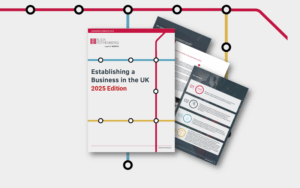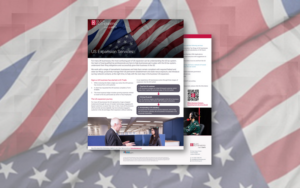Tax Q&A: Reliefs for cultural industries
As so many sections of the economy attempt to recover, tax reliefs aimed at one of the worst-affected sectors – arts and culture – are coming into play.
Q: A lot of clients are having a hard time, but those in the arts more than most. Can you give me some background on this?
Covid-19 – in all of its various forms – has hit many businesses and not-for-profit organisations severely. However, the damage caused to theatres, orchestras, galleries and similar companies has been particularly severe.
This is due both to the lockdowns themselves and also the restricted numbers that have been able (or willing) to visit these attractions over the last two years or so, when Covid-19 restrictions have been eased.
As a recognition of the hardships that Covid-19 has brought to such businesses – and also the importance of this sector traditionally to ‘UK PLC’ (and associated areas such as tourism), the chancellor announced expanded support measures for businesses in this area as part of the October 2021 budget.
Q: So, what are the headline measures?
Firstly, it is worth noting that the headline announcement provided for 50% tax relief for companies in this sector was not one tax change, but several related tax changes. In short, the Budget expanded the relief available under the following tax reliefs:
- Orchestra tax relief;
- Theatre tax relief; and
- Museum and galleries exhibition tax relief.
All of the above schemes pre-date Covid-19 – they were introduced in 2014 – and in broad terms have built on the ‘film schemes’ rules, which were introduced by the last Labour government in 2007. However, the three reliefs have been extended and expanded, as a way of supporting qualifying businesses and organisations to get back on their feet and start new exhibitions, shows and plays as well.
Q: Which organisations qualify?
Firstly, these reliefs are all corporate tax reliefs and hence only available to organisations that are liable to UK corporate taxes. This includes specifically, the following legal structures:
- UK PLCs/limited companies;
- Companies limited by guarantee;
- Charitable incorporated organisation (including the Scottish equivalent); and
- Community interest companies.
Hence, sadly, neither the core relief allowed by these rules (or the enhanced amounts given in the budget), would be available to organisations that operate via:
- A partnership or LLP structure; or as
- Unincorporated associations; or
- Trusts.
In such cases, it would be necessary for the entity to become incorporated (e.g. as a community interest company), or to establish a separate incorporated subsidiary entity (e.g. a production company).
Q: What other conditions need to be met?
In addition, it is important to note that other conditions also need to be met for these reliefs to be available.
While the exact conditions that need to be met differ slightly across the three types of relief available, looking at theatre tax relief as an example, the following conditions need to be met:
1. The costs must be incurred in staging a ‘dramatic production’ – though in practice this can take many forms including ballet, musicals and opera, providing it includes:
- The performers acting/dancing in the show fundamentally fulfil roles or ‘characters’ (rather than just having Joe Bloggs being himself or herself, for example); and
- The performances are live performances; and
- The live performances are the only or at least primary aim of the production (e.g. so any videoing of the show is, for example, purely secondary).
2. There needs to be a clear commercial purpose to the show, exhibition etc. (i.e. so there must be a clear chance that the company will make a profit from the activities); via the great majority of performances being (assuming we are dealing with a theatre or orchestra):
- Live performances for a general, fee-paying public; or
- For educational purposes.
While the conditions for galleries and museums, for example, are slightly different, the underlying conditions are comparable to the above.
Q: How do these tax reliefs work?
These reliefs are designed to help companies ‘finance’ the costs of organising, developing and presenting new productions (or new exhibitions, when we are looking at museums and galleries). They do this by allowing companies to claim tax relief in their corporate tax returns for some of the costs they incur on an ‘enhanced basis’.
Specifically, under rules, the tax relief can be broken down into:
- Expenditure that is eligible for ‘enhanced relief’ (core relief); and
- Non-core costs.
Costs in the first category above – again using a theatre production as an example – would include the costs associated with initially putting on the presentation and the subsequent closure of the presentation and could include costs associated with the production of costumes and stages, the pre-production acting costs and script costs. The deduction for such core costs can be enhanced (increased) in accordance with the table of rates provided below.
Non-core costs would include marketing and PR costs and the legal and finance costs of running the whole organisation. Such costs can – on a ‘just and reasonable’ basis – be offset against the production too though without the enhanced uplift.
As well as being able to reduce the taxable profit of companies, these reliefs can be used to increase the losses recorded by companies. In this situation, the money can be reclaimed from HMRC as a payable tax credit.
Q: What is the value of these reliefs?
While the enhancement has traditionally been restricted to a 25% uplift on the actual costs incurred, the budget allowed these costs to increase to up to 50% until 31 March 2023 and 35% during the 2023/24 tax year. Full details are below.
| Type of relief | Standard rates | Rates for 27/10/21 – 31/03/23 | Rates for 01/04/23 – 31/03/24 |
| Theatre tax relief | 20% (non-touring) / 25% (touring) | 45% (non-touring) / 50% (touring) | 30% (non-touring) / 35% touring |
| Orchestra tax relief | 25% | 50% | 35% |
| Museums/ galleries exhibition relief | 20% (non-touring) / 25% (touring) | 45% (non-touring) / 50% (touring) | 30% (non-touring) / 35% touring |
Advisers should also note that:
- For theatre tax relief and museum/galleries tax relief, the exact value of the enhanced cost uplift that is allowed will depend upon whether the play (or ballet/musical etc.) or the exhibition is a non- touring or touring show. The higher figures given above are only available for touring exhibitions.
- The maximum relief which is available under the tax reliefs is subject to specific limits, linked into the rules of particular schemes and wider state aid regulations.
If you would like to discuss any of the above, please get in touch with Robert Salter using the details on this page.
For press enquiries please contact David Barzilay.
Contact Robert

You may also be interested in

Ele Theochari has been appointed as Vice President of The Association of Taxation Technicians

Retailers Both Online and High Street Struggle Amid Rising Staffing Costs













